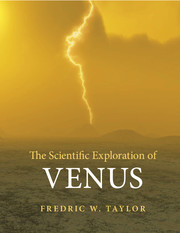Book contents
- Frontmatter
- Contents
- Overview
- Prologue
- A note on scientific units
- Acknowledgements
- Part I Views of Venus, from the beginning to the present day
- Part II The motivation to continue the quest
- Part III Plans and visions for the future
- Epilogue
- References and acknowledgements
- Appendix A Chronology of space missions to Venus
- Appendix B Data about Venus
- Index
- Plate section
Prologue
Published online by Cambridge University Press: 05 September 2014
- Frontmatter
- Contents
- Overview
- Prologue
- A note on scientific units
- Acknowledgements
- Part I Views of Venus, from the beginning to the present day
- Part II The motivation to continue the quest
- Part III Plans and visions for the future
- Epilogue
- References and acknowledgements
- Appendix A Chronology of space missions to Venus
- Appendix B Data about Venus
- Index
- Plate section
Summary
Venus is the closest planet to the Earth and, with the obvious exceptions of the Sun and Moon, it is easily the brightest object which regularly appears in our sky. Near inferior conjunction, the time of closest approach when the two planets are separated by a mere 40 million kilometres, a modest telescope will reveal Venus as a brilliant, featureless crescent. The crescent-shaped appearance is characteristic of a body that is closer to the Sun than the observer, as Galileo realised when he turned his primitive telescope on Venus four centuries ago.
Modern values for the basic physical characteristics of the planet are very close to Earth’s, with Venus having about 82 per cent of the mass, 95 per cent of the diameter, and about the same density, suggesting a similar internal composition and structure of a rocky mantle with an iron-nickel core. No other planet matches ours so closely: Mars, for instance, has only about a tenth of Earth’s mass, and just over half the diameter. Mercury is even smaller, weighing in at only 5 per cent of the mass of Earth, and the Moon at just over 1 per cent. So the Earth’s nearest neighbour is also its only real twin in our solar system.
- Type
- Chapter
- Information
- The Scientific Exploration of Venus , pp. xiii - xviPublisher: Cambridge University PressPrint publication year: 2014



